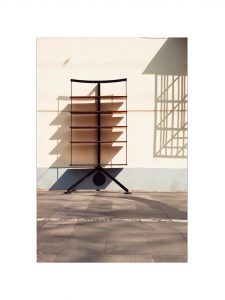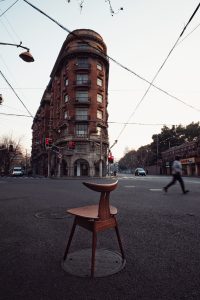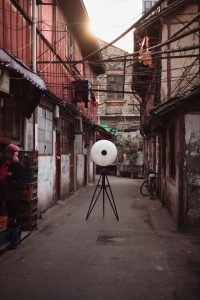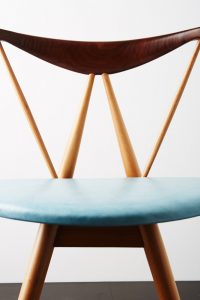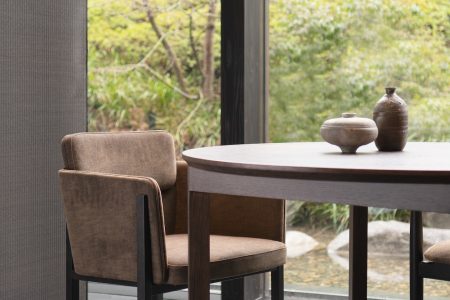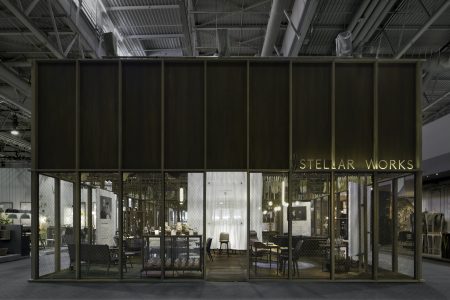Yuichiro Hori: The journey of a Japanese entrepreneur in Shanghai
Founder and CEO, Yuichiro Hori runs Stellar Works, a specialised furniture design atelier with around 400 employees from all around the world.
Since 2012, Stellar Works has been building up the first global furniture design brand from Asia, based in Shanghai, with the renowned, high-end French furniture makers, Laval, in partnership with the Stellar Works factory and production teams. “The cultural context in which Stellar Works navigates has always been enriched by the contributions and expressions of the talented interior architects and designers we work with who already are highly recognised in their fields. The signature collections we have been starting to develop seven years ago demonstrate our on-going commitment to working with the best design talents from around the world,” states Hori.
TLmag: How did you come to establish Stellar Works in 2012?
Yuichiro Hori (YH): I first arrived in Shanghai in 1998 working as a project manager for a Japanese developer. When the job ended, I didn’t want to leave the city which was ever-changing and moving forward. I come from Japan where the transmission of craftsmanship is quite similar to France. Setting up my factory was the most difficult issue when I started up my business. The Chinese manufacturers could not reach the quality level I wanted while working for a Japanese firm. Seeing that the furniture industry in Japan was far too conservative and not so challenging, I saw then the opportunity to set up my own business that seemed to me should be in Shanghai. But it took me some time before I began to think about developing a company. I was not 100% confident, nor could I commit to investing in my own venture.
Before thinking about the business, I reflected on my ability to be an entrepreneur. Making this decision took time. I initially thought to design and sell my own furniture in China. I even started to invest in a factory, but the local conditions forced me quite rapidly to set up my own premises taking advantage of the lower production costs and the easy access to local suppliers. Finding young and experienced craftspeople who were keen to work hard was quite impossible and I had to find and train my own staff in order to achieve the level of quality I wanted. Today, by employing Japanese managers for quality control and French technicians as a result of a partnership with high-end furniture maker Laval – which has a 40 per cent share in the firm – allows me to achieve a unique state of the art production facility. In five years I have been able to establish a Chinese factory with international standards in terms of technology, quality control and working conditions. By observing how factories are run in Japan, Europe and North America, Stellar Works has been able to develop fast with in-house competencies combining prototyping and a streamlined production process through to the finishings. Knowing that the factory only started with high-quality contract work, launching my own furniture line, Stellar Works, in 2013, was a natural step.
TLmag: What have been the challenges and opportunities associated with becoming the first global furniture design brand from Asia?
YH: In order to build up the brand Stellar Works, I had to find a creative direction which can be both recognized at a local and international level. By convincing Neri & Hu to collaborate in this new venture in 2015 as Creative Directors, Stellar Works has been able to move from a brand manufacturer to build up a design brand with a new range of signature collections, combining the production of a line of vintage chairs by Danish architect Vilhelm Wohlert, and a contemporary line that bridges the artistry of traditional Chinese, Japanese, French and Scandinavian carpentry. Nowadays, Stellar Works can be distinctively identified thanks to its Asian aesthetic that brings in diverse talents putting Asia in vogue again.
Thanks to its brand recognition, the company has started to expand worldwide and sells in 35 countries with a yearly revenue that has reached US$ 20 million in 2016. While the markets were outside Asia at first – in North America and Europe – Stellar Works has started to gain some shares on its local market where clients are slowly becoming more aware of original creations vs copies. Some of the recent projects like the one with the New York-based designer and architect David Rockwell, has required some innovation on the part of Stellar Works—in this case, we had to find a solution to fabricate the bent metal frame of his Valet Collection. In addition to its already productive bentwood and wooden furniture atelier, Stellar Works acquired the building of a former bicycle company next door to its Shanghai factory to be able to manufacture this cutting-edge collaborative collection.
Each signature collection featured in Stellar Works’s catalogue is a source of added value for the company. It showcases the factory’s ability to fabricate and hand-finish complex timber-framed seating, elegant and sophisticated bespoke furniture designs ranging from benches to tables, chairs and many more interior design pieces… Each creation has a timeless yet contemporary look. The Asian aesthetic allows some twists in the contemporary collections which are reflecting this dialogue between East and West.
TLmag: You have a sharp knowledge and cultivate a deep interest for Southeast Asian craftsmanship, as well as from Japan. This is seen in your brand culture as well as developments in the retail market. What are the main collaborations you’ve been developing these past five years?
YH: I have been developing some close collaborations with Japanese craftsmen – mainly from Kyoto – who are now united within the Japan Handmade collective, (for example a kimono textile with Hosoo, bamboo weaving, lacquer, indigo dying, metalwork such as copper and brass with Kaikado…). I am interested in combining wood and metal to gold leaf. Travelling in one hour to Japan from Shanghai where we are located, I also have close connections in Arita, a city that just celebrated four-hundred years as porcelain making specialists. Thanks to this secular tradition, we developed a very contemporary and coherent Arita Collection of objects with Neri & Hu, which complement the interior design of our range of furniture. In May 2017, we introduced at ICFF in New York, a natural indigo-dyed wooden furniture with Crème Design that won an award and, more recently, for the London Design Festival in September 2017, we had an installation at the Design Museum of the iconic Ming Chair by Neri & Hu that explored – thanks to the use of the indigo process – the cultural materiality in manufacturing. The Ming Chair mines the history of Chinese decorative arts to create a crisp and contemporary furniture piece that fits in our contemporary interiors. Both collaborations were able to happen thanks to our collaboration with The Fabrick Lab, HK-Ginzhou in China. Fabrik Lab is developing textiles with high-end technologies and processes and applies them to furniture and other kinds of materials. The two iterations of the indigo Exchange Chair and Ming Chair are revealing that this experimentation is key in our business and can bring new innovative directions to our modern manufacturing system and our style, as well as bring in much more artistry to create pieces which are highly contemporary, while modern in form, and steeped in tradition. I am aiming to develop future projects which will involve a series of Asian craftsmanship, both from Japan and China. It is part of our retail strategy to develop a range of high-end accessories, upholstery for our furniture, and a cross-cultural dialogue between regional craftsmanship intertwined with the more global expansion of our design brand. Traditional craft techniques can be therefore combined with modern industrial processes to create this refined Asian aesthetic and timeless design.
This article is part of TLmag Special Edition Stellar Works: Asian Sensibility, Timeless Craft


